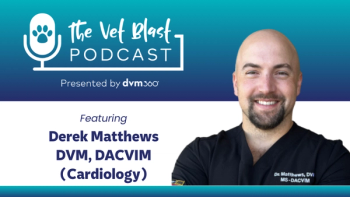
Hypercalcemia in cats (Proceedings)
Possible mechanisms of hypercalcemia
Possible mechanisms of hypercalcemia
Increased intake/absorption (intestinal)
Decreased loss (renal tubular reabsorption)
Increased bone resorption
Veterinary Literature
Midkiff et al
- Retrospective of 20 cats with hypercalcemia (11.5-14.1 mg/dL)
- 14 cats had known dietary history: all on acidifying diets
- assays run: (not all tests run on all cats) total calcium, ionized calcium, PTH, PTHrP, calcitriol, 25, dihydroxycholecalciferol, fractional excretion of calcium (spot checks only)
Therapy
Diet: 11/20, no response, except one concurrent treatment with steroids
Surgery: 2/20, transient (days) response, recurrence of hypercalcemia
Glucocorticoids: 6/20, 10-12.5 mg per cat per day
4/6 had complete response
2/6 had partial response (i.e. decrease in either total or ionized serum calcium but not both)
Prognosis
15/20 cats were alive 7 years past diagnosis
Savary KCM, et al
- Retrospective of 71 cats with hypercalcemia and a clinical diagnosis
- Majority paraneoplastic or CRF
- 11/71: urolithiasis with no other diagnosis
o mean calcium 11.5 0.4 mg/dL
o significantly lower than paraneoplastic (mean 13.52.5)
o of those with known dietary history, only 1/2 on acidifying diets
McClain HM et al
- Retrospective of 5 cats who presented with lower urinary tract signs, CaOx urolithiasis
- On acidifying diets, switched to W/D, hypercalcemia resolved
- Due to decreased acid, or increased fiber with decreased intestinal absorption?
Idiopathic hypercalcemic disorders in humans
Familial benign hypercalcemia
Nonprogressive
Hypocalciuric
Normal PTH levels
Normal D2 and D3 levels
Don't respond to steroid therapy
Williams syndrome/Idiopathic infantile hypercalcemia
Moderate to severe hypercalcemia
Nephrocalcinosis with hypercaliuria
Respond to steroid, calcitonin
Decreased calcitonin levels, sometimes increases in calcitriol levels
Can grow out of it
References
Midkiff AM, Chew DJ, Randolph JF, Center SA, DiBartola SP. Idiopathic hypercalcemia in cats. JVIM 2000 14:619-626.
Savary KCM, Price GS, Vaden SL. Hypercalcemia in cats: A retrospective study of 71 cats (1991-1997). JVIM 2000 14:184-189.
McClain HM, Barsanti JM, Bartges JW. Hypercalcemia and calcium oxaloate urolithiasis in cats: A report of 5 cases. JAAHA 1999 35:297-301.
Rodd C, Goodyer P. Hypercalcemia of the newborn: Etiology, evaluation, and management. Pediatr Nephrol 2000 14:354-355.
Shimizu H, Kodama S, Takeuchi A, Matui T. Idiopathic infantile hypercalcemia discovered in the newborn period. Acta Pediatrica Japonica 1994 36:720-723.
Alon U, Berkowitz D, Berant M. Idiopathic infantile hypercalcemia. Child Nephrol & Urol. 1992 12:47-50.
Newsletter
From exam room tips to practice management insights, get trusted veterinary news delivered straight to your inbox—subscribe to dvm360.



